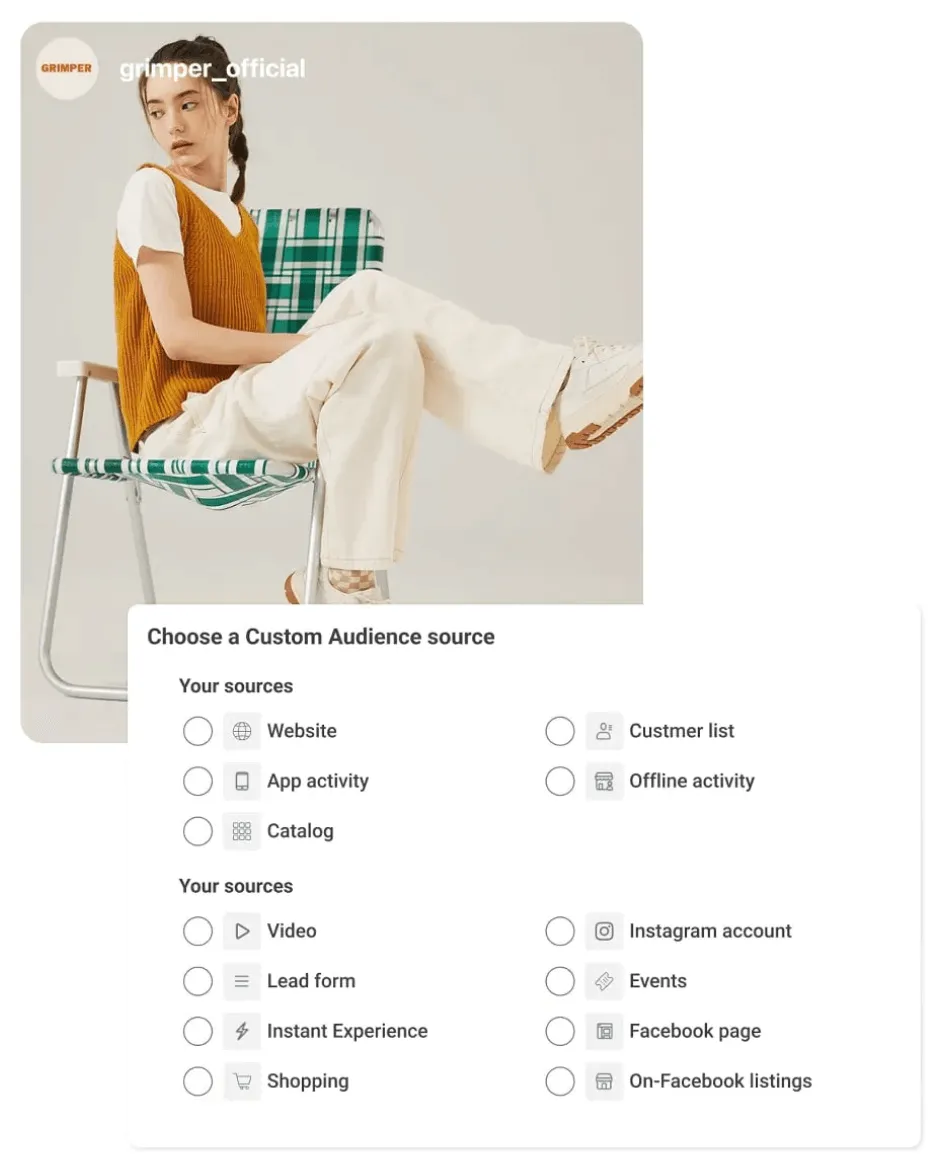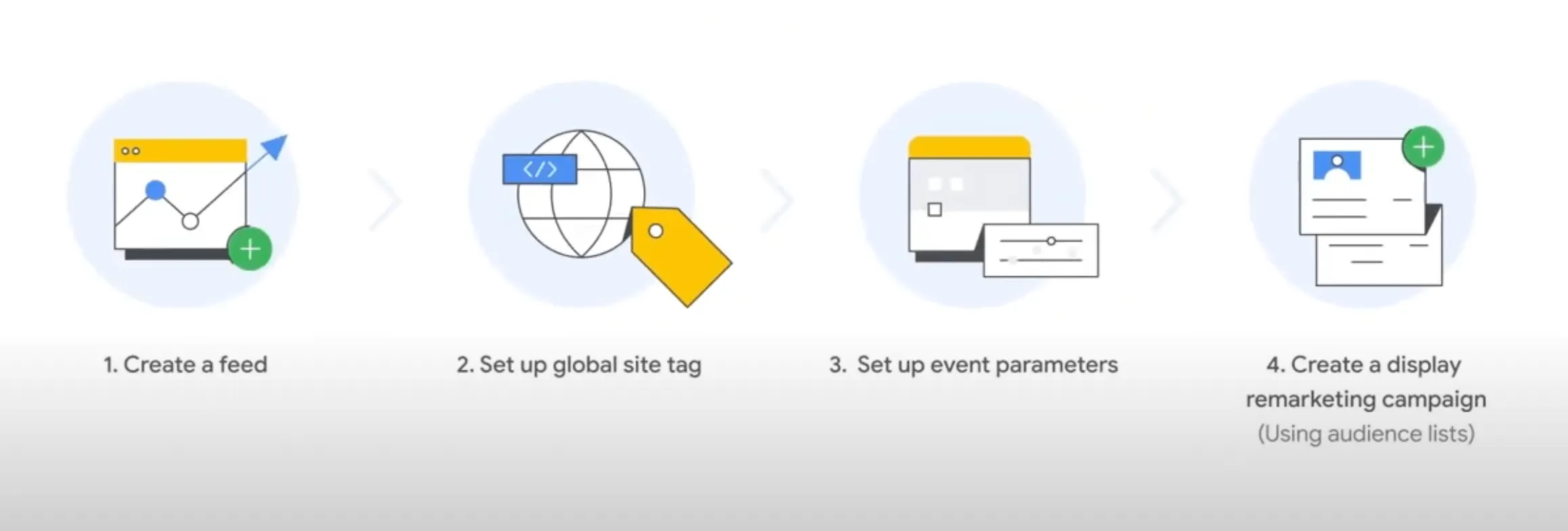Remarketing is a tactic that allows you to serve ads to audiences that have previously interacted with your ads. It’s called remarketing because you are targeting past visitors or existing customers. It is an ideal tactic for increasing brand loyalty and moving customers to the next stage of their journey.
When should you implement remarketing?
Remarketing can be a great idea if:
- You want to build brand awareness and nurture users in the consideration stage, especially for businesses with long buying cycles.
- You want to combat abandoned shopping carts or sites, reminding users to return and complete their journey.
- You want to keep your brand fresh in the minds of users, especially for long buying cycles.
- You want to nurture users and move them from the consideration stage to their first purchase.
- You want to generate repeat purchases from existing customers
As a rule of thumb, you want to remarket relatively soon after initial content to keep your product or brand fresh in the minds of potential customers. However, you don't want to be pushy as that could frustrate your visitors. We also advise setting ad frequency caps to avoid ad fatigue. Here are practical remarketing strategies that you can start implementing.
Top 5 practical remarketing strategies for startups
Recent studies have shown that selling to existing customers has a 70% success rate, while it is only 20% for new customers. So, by implementing remarketing strategies, startups can grow their revenue without necessarily investing in customer acquisition.
1. Segmented audience targeting
Instead of broad targeting, segment your audience based on interest or past action. That way, you can create ad creatives and messages that appeal to each group.
The custom audience feature on Facebook allows you to segment audiences based on engaged or existing audiences. Google also offers a similar feature with the audience segment feature, allowing you to segment audiences by campaign type and features, like life events, in-market, etc.
These features allow you to segment and target past or interested customers with relevant and tailored messages. You can also show cart content or discount offers to abandon cart customers or complementary products to past customers.

Facebook Ads' Custom Audience allows you to target people who have already shown an interest in your business.
2. Cross-platform remarketing
Cross-channel remarketing leverages cookies and tracking pixels. These activity trackers allow you to target audiences across websites.
For instance, when someone wants to start their fitness journey, they may search for running shoes on Google. Activity trackers log the interaction, and later on while browsing through Facebook, you serve them to display ads or emails for products-running shoes. They click and add to the cart but do not complete the purchase.
You can re-engage them via email with a discount offer. In this example, you leverage cross-channel remarketing to target an already interested audience, which is more likely to convert.
3. Dynamic remarketing
A Google case study shows how Tirendo, a startup, increased conversions by 161% and reduced cost per order (CPO) by 45% through remarketing.
With dynamic remarketing, Google shows personalized ads to your audience based on the products or services they view on your site. This increases relevance and the chances of conversion. Setting up remarketing is easy on Google, here are the key steps:

Simple steps to get started with dynamic remarketing on Google Ads
Here are the few things you need to get started:
- Set up Google Merchant Center.
- Create product or service feeds.
- The product feed is a spreadsheet that provides Google Ads with the data necessary to know which customers are viewing which ads so that it can generate and promote relevant ads to customers across the Google Display Network.
- If you’re a retailer, upload product feed to the Google Merchant Center. If not, upload it to the business data section of your shared library.
- Add the dynamic remarketing tag with custom parameters to your website pages.
- This will add visitors to remarketing lists and associate them with the products they viewed.
- Create responsive display ads.
Now, you’ll be ready to use the remarketing feature on Google. Here is a more detailed guide for reference.
4. Upsell or cross-sell to existing customers
With upselling or cross-selling, you display ads with an upgrade or complementary product to an existing customer.
For instance, a customer purchases your business coaching short course. You can remarket them for the advanced version of the course or cross-sell by offering your one-on-one coaching session.
5. Utilizing AI and automation
AI tools allow you to automate customer journey tracking. That way, you can track and respond to customer interactions in real-time.
Imagine a customer just booked an air ticket. With AI’s predictive analytics, you can remarket them with tour or hotel plans. AI gives recommendations based on previous purchasing behavior and data across sites, giving the customers additional related products to consider.
Ad platforms provide various AI tools that you can start using, such as Meta Advantage+, smart bidding and responsive search ads. If your business goal is to generate sales/leads and revenue from Google Ads, AI-driven bidding strategies like 'Maximize Conversions' and 'Maximize Conversion Value' offer viable starting points.
While AI is a powerful tool, a successful campaign also requires human expertise. It still requires expert human input in terms of monitoring and feeding it with correct data, such as audience segments, customer lists, lookalike lists, and remarketing lists.
Best practices for startup remarketing campaigns
- Ad creative and messaging: Some tips include using vertical videos since most people hold their phones that way. Use clear and concise calls to action (CTA).
- A/B testing: Study the data from your ad campaign and develop a new hypothesis for an A/B test based on what you have learned. That will reveal how your audience responds to another variant of your ad.
- Tracking metrics: Tracking engagement metrics can point you to the right targets for remarketing. For instance, if a user has spent considerable time on your product page without completing a purchase, they may be interested but need an extra nudge. You can use Facebook Pixel to track visits to product pages to identify such potential high-value customers that you can remarket.
Factors to consider for remarketing
While it’s essential to know when to remarket, there are factors that may affect your timing or how frequently you do it. They include:
| Factors | Considerations |
| Your budget | As expected, you’ll be dealing with a limited budget. So, you would need to use a measured approach and focus on high-potential opportunities. For instance, abandon-cart customers or recent purchases may offer better opportunities to convert. |
| Sales cycle length | The type of product can determine the length of the sales cycle. If the sales cycle tends to be longer for your product, you may need to wait longer before you start remarketing. |
| Testing and iteration | A/B tests allow you to prioritize a data-driven approach. By A/B testing different timings and even audience segments, you discover opportunities to adjust your remarketing strategies. |
| Type of product or service | The kind of product or service you offer may affect the timing of your remarketing campaigns. For instance, for products that require impulse purchasing, such as fashion products, you may remarket quicker. If your products require longer decision-making, like SaaS software, you may need to use a measured approach. |
| Audience segment | It’s essential to tailor your remarketing campaigns for different audience segments. For instance, prioritize abandoned cart visitors ahead of product page viewers. |
Remarketing challenges and how to overcome them
Ad Fatigue
Ad fatigue happens when your audience becomes too exposed to your ads. Hence, the creative loses its effectiveness, and platform algorithms consider it stagnant and limit its reach. It happens due to lack of freshness, banner blindness, and overexposure.
Keep an eye on engagement, reach and frequency. For instance, your ad campaign delivered 3% CTR, then CTR dropped to 0.5% in the third week. If the ad frequency remains constant or rises and engagement metrics keep declining, you’re dealing with ad fatigue. Platform algorithms usually interpret this as your ad being less engaging, which increases the CPC.
Strategies to avoid overexposing your audience to the same ads.
- Frequency cap settings: Frequency cap settings limit the number of times your ads appear to the same person. You can start with a low-frequency cap of 1-2 impressions per day. Then, track reach and engagement metrics and keep adjusting up or down based on the data.
- Increase ad variants: To do this, run multiple ads at the same time so that the platform can rotate among them. You can start with 3-5 and monitor the metrics.
- Shorten the ad campaign duration: This is important, especially if your target audience is smaller than the platform recommends for the ad format.
Above all, keep monitoring the metrics over an agreed timeline (i.e., a week), and then decide whether to pause or iterate.
Complexity of cross-platform remarketing
Managing remarketing campaigns across multiple platforms can be complex and time-consuming, especially considering the limited resources available. Each platform has unique rules, audience segmentation, metrics, and algorithms.
Things can get complex when you try to monitor all these vital components and ads. You can connect with a marketing agency to address this. For instance, Kaya’s proprietary AI tool collects all your marketing data in one place, allowing you to make accurate and swift decisions with ease.
FAQ
What is the difference between retargeting and remarketing strategies?
How do remarketing strategies help in customer retention?
What are some common mistakes in remarketing?
How can a startup measure the success of its remarketing campaigns?
Final thoughts
Considering that customer retention is cheaper than acquisition, remarketing strategies are both a cost-saving and growth strategy for startups. By focusing on existing or interested audiences, startups can increase their chances of making a sale by up to 70%.
Ad platforms offer several features, including AI tools for remarketing, and Kaya offers extensive marketing and paid ad management experience to support your remarketing efforts.

